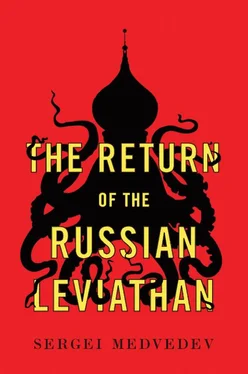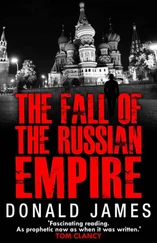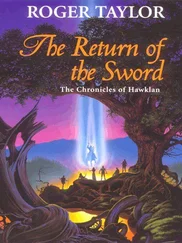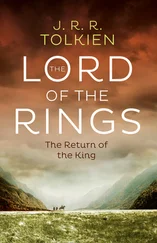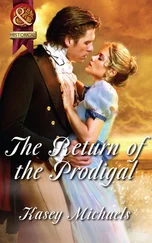In the well-fed, post-Soviet era, there’s a popular joke about the Russian tourist who is being questioned at the border on arrival in a Western country:
‘Nationality?’
‘Russian.’
‘Occupation?’
‘No, just visiting.’
Now the jokes have been turned around. On the anniversary of the annexation of Crimea, a video, called ‘I Am a Russian Invader’, went viral across the Russian Internet. Created in the infamous studio, My Duck’s Vision, the film is an apologia for Russian colonialism and gives a list of the blessings that the ‘invader by birthright’ has brought to the occupied territory. Yury Degtyarev, the studio’s general director, who is known for his links to the pro-Kremlin youth movement Nashi (‘Our people’), acknowledged that the video was ordered by people close to the state. The film has been translated into ten languages, including Polish and Chinese. It should be noted that, curiously, the link to it was placed on the Facebook page of the Russian Embassy in Finland, which caused quite a stir in the Finnish press.
The video itself is not worthy of attention. My Duck’s Vision has already produced a string of trashy film clips, from the ‘scandalous truth’ about McDonald’s and Apple to one where the hero grabs the breasts of thousands of girls and then, with the same paw, shakes hands with Putin at a youth gathering at Lake Seliger in the Tver Oblast. The point is the avalanche of popularity achieved by ‘Invader’. In the first week it was watched on YouTube nearly five million times and received six times more ‘likes’ than ‘dislikes’. When such a viral video explodes on the Internet, it causes an even deeper virus within the Russian subconscious: it helps create a false impression of superiority, confidence in our infallibility and a painful nostalgia for the empire.
The droning voice of the presenter stresses the advantages of civilization that Russia has brought to its conquered lands, creating an almost Kipling-like impression of the ‘Russian man’s burden’. Look, in Siberia, where previously ‘they sold women for a bundle of sable pelts’, we have begun to extract oil, gas and aluminium, and we have built cities with nurseries and hospitals. Farmsteads in the Baltic States have been turned into electricity stations and factories producing radio technology and cars. And, guess what, in the steppes of Central Asia, we constructed cosmodromes and stadiums, and we grew wheat and cotton.
The voice forgets to say that the advantages of the modern era, which were imposed upon the native peoples of the North, destroyed their traditional way of life, took away the feeding grounds for their reindeer and soaked these grounds with oil, tore children away from their nomadic families and stuck them in boarding schools, killed off shamans and healers, destroyed the knowledge of pre-European civilizations and brought with them the main exterminator of the aboriginal peoples: vodka. The voice forgets to say that cotton became the curse of Central Asia, drying up the Amu Darya and Syr Darya Rivers for the sake of irrigation, turning the Aral Sea into a desert, and every year forcing the men, women and children of Uzbekistan to take part in the compulsory harvesting of this ‘white gold’. And in any case, Uzbek cotton cannot compete on global markets: it is much poorer in quality than Egyptian cotton. Equally uncompetitive were the RAF minibuses and Rigonda radiograms made in Latvia. These clumsy creations of the Soviet automobile and radio industries were in demand only in the semi-closed socialist camp; they had no chance on the world market against ‘Toyota’ or ‘Sony’. And the Baltic peoples could remember much more besides: their occupation by the Red Army and the deportation of tens of thousands of people to Siberia, the destruction of farmsteads and their enforced replacement with collective farms, and the ecological disasters they suffered. The apocalyptic scenery of the Zone in Andrei Tarkovsky’s film Stalker was shot at a disused electricity station near Tallinn.
The Russian Empire and then later the USSR behaved towards their outlying districts in the classic manner of an agent of modernization, smashing the traditional way of life with the iron fist of industrialization, creating modern infrastructure but, at the same time, destroying the natural environment and reshaping the map of the nations. Over the course of hundreds of years, Russia expropriated neighbouring territories, reaching out in what the historian Paul Kennedy called ‘imperial overstretch’. But by the end of the twentieth century this gigantic territorial project had run its course and collapsed under the weight of its own ambitions and responsibilities. It is enough today to compare the standard of living on the Karelian Isthmus in the Leningrad Oblast, which was occupied by the USSR during the Soviet-Finnish War of 1939–40, with the standard of living in neighbouring Finland. Travelling by train or car from Helsinki to Vyborg is an existential act. It seems that when you cross the Russo-Finnish border the very quality of the space around you changes. The houses are dilapidated; the roads get worse and worse; there are neglected forests and abandoned fields, in which lies a huge amount of scrap metal: rusting rails, old car bodies, severed cables – the remains of a great dream of modernization, long-forgotten. The ‘Russian invader’ may have been able to conquer territory (‘at what price?’ is a separate question), but he was not very capable of making it fit for habitation.
From an historical perspective, the Russian colonization of Eurasia was simply a part of the Age of Exploration of the early capitalist and imperialist time. Russia was caught up in the Age of Modernity; like England, France and Holland, Russia widened the borders of the known world. They conquered foreigners using cold steel, gunpowder and the cross, incorporating new lands and creating one of the largest empires ever known. But here the similarities end. After the fall of the French and British Empires and the turbulent social changes of the 1960s, the discourse of postcolonialism was established in the West. This was linked to Edward Said’s 1979 book Orientalism , in which he describes how the West dreamt up the East as an object of study, to be disciplined and colonized; and with the works of Gayatri Spivak, which in the 1980s posed the radical question, ‘Can the subaltern speak?’
The postcolonial theory has never gained popularity in the academic community in Russia, and is regarded with the same disdain as the Western ideas of tolerance and political correctness. Intellectually, Russia is half a century, if not a century, behind, back in the times of Kipling, with its ignorant sense of pure racism and colonialism and its naive certainty of the superiority of the white man. In reality, Russia always lags behind by about fifty to a hundred years. This was the case with the gunpowder revolution, with socialism, with liberalism… and it is only now that we are reaching the most painful phase of coming to terms with the collapse of our colonialism (Putin described the collapse of the USSR as, ‘the greatest geopolitical catastrophe’), which the West went through half a century ago.
The popularity of a video about the Russian invader is based on the same dense arrogance – on the myths of the advantages of Soviet civilization and of the superiority of the fictional ‘Russian world’. The annexation of Crimea and the war in the Donbass demonstrate the same ‘invader’s syndrome’. From the Belovezha Accords in 1991, [29] The Belovezha Accords were so called because, on 8 December 1991, the Presidents of Russia, Ukraine and Belarus, meeting in the Belovezha Forest Reserve in Belarus, signed the deal setting up the Commonwealth of Independent States (CIS). The establishment of this organization signalled the end of the USSR, although it was only seventeen days later, on 25 December, that Mikhail Gorbachev formally resigned as Soviet President.
which signalled the end of the USSR, Russia had a contemptuous attitude to Ukrainian independence. The very word ‘ nezalezhnost ’ (Ukrainian for ‘independence’) is spoken by Russians with irony. Russia does not consider Ukraine as a state but as an ethnography, merely a Cossack in his baggy trousers, standing in the doorway of one of the chain of ‘Taras Bulba’ Ukrainian restaurants; for them, Ukraine is simply a sort of lesser Russia. Just as two hundred years ago, at the time of the Monroe Doctrine, the Latin American countries were looked on by the USA as ‘banana republics’, so Ukraine is now regarded by the Russian chauvinist in the same way: it is the ‘pork fat republic’, named after a typical Ukrainian product (and Belarus is the ‘potato republic’), and it does not have the right to political sovereignty.
Читать дальше
